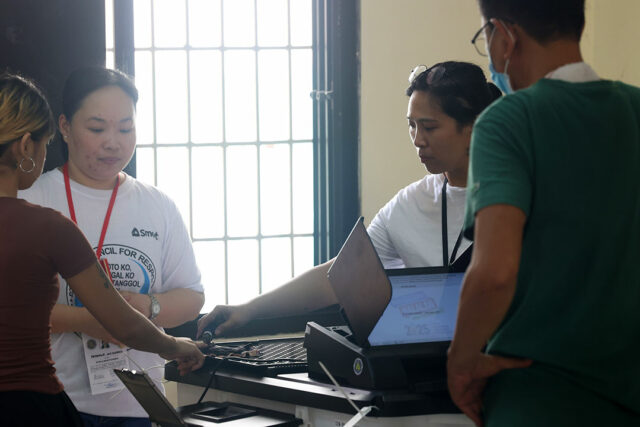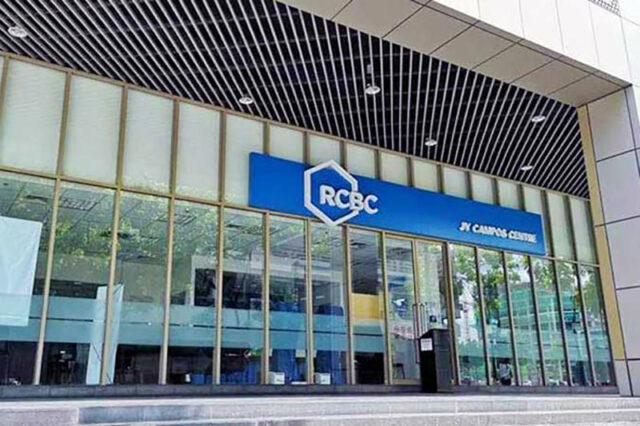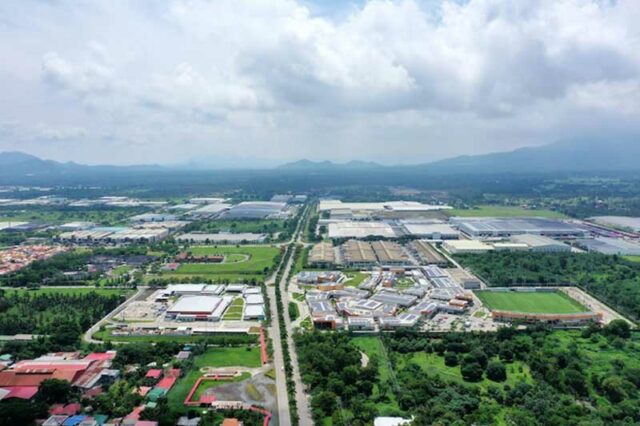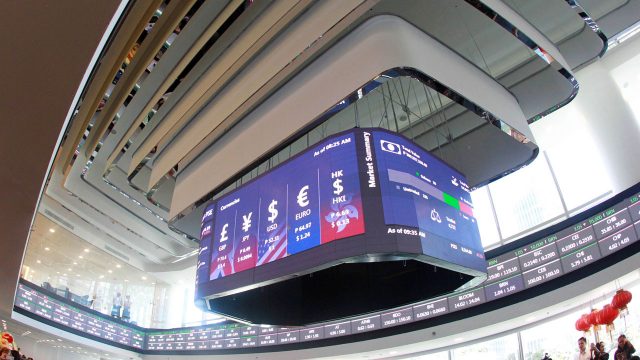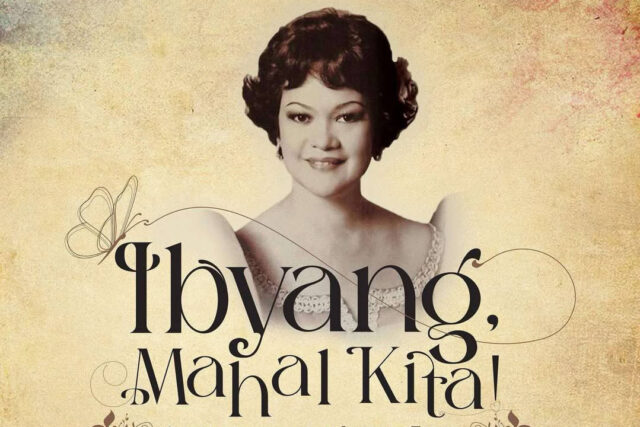CANNES, France — Although he is now free to travel again after a 15-year ban, Iranian director Jafar Panahi said on Wednesday he would be returning immediately to his country after attending the Cannes Film Festival to begin work on his next film.
Mr. Panahi was in southern France for the premiere of his latest film It Was Just An Accident, which is competing against 21 other films for the festival’s top prize, the Palme d’Or.
The 64-year-old was banned from making films or traveling abroad for 20 years in 2010, after he was convicted of “propaganda against the system.” That sentence was recently revoked, allowing him to travel again for the first time in 15 years.
Despite the travel ban and multiple stints in jail, Mr. Panahi said that making films did not put him in any more danger than the actions of other Iranians.
“Every day, there is a restriction about the veil, every day there is an issue, but we see women going out unveiled. Isn’t that dangerous?” said Mr. Panahi.
“As soon as the festival ends, the next evening I will be in Tehran,” said the winner of several international awards, including the 2015 Berlin Film Festival’s Golden Bear for his film Taxi.
“I need to go think about what my next film will be.”
While he is also allowed to film again, Mr. Panahi said that the way he makes movies has not changed, as he does not follow the government’s rules, such as submitting his script for approval.
It Was Just An Accident follows Vahid, played by Vahid Mobasseri, who kidnaps a man with a false leg who looks just like the one who tortured him in prison and ruined his life.
Mr. Panahi said that being in jail influenced the film but he himself did not experience all the stories recounted in it.
“When you imprison an artist, you’re giving them material, you’re handing them new ideas. You’re opening up a whole new world to them,” said the director.
The director, who was last at Cannes in person in 2003, when Crimson Gold was screened in the Un Certain Regard category, was visibly emotional, as was his cast, at Tuesday’s premiere.
“The excitement of being able to show the conditions we’re working in, the circumstances under which we struggle, of being able to show so many things and have others understand-especially people who are not from the Middle East — was truly meaningful and compelling for us,” said actor Mariam Afshari.
ELEANOR THE GREAT
Award-winning actor Scarlett Johansson’s directorial debut at the Cannes Film Festival is a story she hopes will challenge audiences to reconsider their perspectives on forgiveness and empathy, she told Reuters on Wednesday.
Eleanor the Great, which is competing in the second-tier Un Certain Regard category at Cannes, stars 95-year-old June Squibb as the titular Eleanor, who, due to a case of mistaken identity, tries to pass as a Holocaust survivor as she seeks to make new friends after moving to New York City.
“It seems to be a theme in today’s world that we’re just very quick to judge and kind of cement our feelings about someone or some event,” said twice Oscar-nominated Ms. Johansson. “It’s limiting.”
The Black Widow star’s transition to directing was not planned but came at what she said was the right time.
The script, which she described as “a little gem,” resonated with her immediately, and with Ms. Squibb also enthusiastic about its layered humor Ms. Johansson felt they had to seize the moment.
“When I began to read the script, I felt the way Scarlett did — that this is something I had to do,” said Ms. Squibb, known for 2002’s About Schmidt and 2013’s Nebraska.
This year’s Un Certain Regard category is particularly strong and will pit Eleanor the Great against debut films from fellow actors Harris Dickinson and Kristen Stewart, among others.
Critics, however, were tough.
The Guardian gave the film two out of five stars for seriously misjudging the seriousness of the story’s premise, while Variety called the movie, which received a five-minute ovation at its premiere, an unconvincing crowd-pleaser.
ONCE UPON A TIME IN GAZA
The decision to include a film set in Gaza in the Cannes Film Festival’ s official selection comes at a particularly urgent time for the small coastal enclave, said twin Palestinian filmmakers Arab and Tarzan Nasser.
“There is a need to give a platform to the voice of Palestine, the Palestinian story, the Gaza story, in an international festival like the Cannes Film Festival, with a wide audience from all over the world,” Arab Nasser told Reuters on Tuesday.
The brothers’ film Once Upon A Time in Gaza, which is competing in the second-tier Un Certain Regard category, premiered at the festival in southern France on Monday.
Their previous work includes Condom Lead, the first-ever Palestinian short to compete at Cannes in 2013, as well as their 2015 debut feature Degrade and 2020’s Gaza Mon Amour.
Once Upon A Time in Gaza begins in 2007, the year the Islamist group Hamas took over Gaza, with low-level drug dealer Osama (Majd Eid) running a falafel stand that serves as a front.
His underling Yahya (Nader Abd Alhay) looks after the restaurant and pines for a better life outside Gaza.
After an incident with a corrupt cop, the story fast-forwards to 2009, when Hamas has fully taken control, and Yahya is cast in a cheap-looking TV series commissioned by the group about a militant who died a hero in the fight against Israel.
Yahya is meant to symbolize a whole generation of Gazans who have been stuck in the coastal enclave with few perspectives, said Tarzan Nasser.
“Maybe his lot would have changed had Israel allowed him to leave the Gaza Strip,” said the director, who along with his brother has been in exile in Jordan for more than a decade.
The film name is meant to capture the rhythm of Gaza at the time, where there is no stability or continuity, and “an incident now would become a ‘once upon a time’ tomorrow,” said Arab Nasser.
But it has a different meaning with a view to the Oct. 7, 2023 Hamas attack that killed 1,200 people in southern Israel and saw 251 taken hostage.
That attack triggered Israel’s campaign that has so far killed more than 50,000 Palestinians and devastated Gaza.
Now “we refer to all of Gaza as ‘once upon a time,’ because Israel destroyed Gaza from north to south and has damaged all means of life,” he added. “All the memories, all the incidents that one has in one’s memory of this place, have all vanished, Israel has destroyed it completely.”
PILLION
British director Harry Lighton wanted to dispel preconceptions about kink with his feature debut Pillion, featuring Alexander Skarsgård, he told Reuters at the Cannes Film Festival.
Set in London, Mr. Lighton’s romantic drama explores the submissive relationship between Colin, portrayed by Harry Melling, a shy traffic officer who lives at home with his parents, and Mr. Skarsgård’s Ray, a handsome biker with a mysterious past.
Eager to meet Ray’s demands for domestic obedience, Colin begins to discover what his partner describes as an “aptitude for devotion.” Their relationship is consensual, and its terms are clear.
Mr. Lighton told Reuters he had wanted to make a film about submissive relationships for some time, so when Adam Mars-Jones’ Box Hill novel came along, he jumped at the opportunity to create an adaptation.
“There’s a lot of surface preconceptions about kink and the challenge of digging beneath some of those appealed to me,” he told Reuters.
The film is peppered with moments of comedy so as to, in Mr. Lighton’s words, “lighten the load” and “riff on some of the tropes of romantic comedies and see how they map onto an atypical submissive/dominant relationship.”
Mr. Melling and Mr. Skarsgård said comedic moments were often inadvertently caused by “clumsy and awkward” blunders on set.
“In reality there are a lot of awkward moments when you change position,” Mr. Skarsgård told Reuters. “Just by leaving in those awkward transitions and stuff makes it feel real but it also is kind of funny because you’re not used to seeing that on screen.”
Mr. Melling, known for portraying Dudley Dursley in the Harry Potter series and a chess champion in The Queen’s Gambit, told Reuters he was relieved the audience laughed during the film’s world premiere on Sunday.
“The weird thing about doing a movie is you don’t really know if it is funny at the time of doing it,” he told Reuters.
Pillion is competing in the festival’s second-tier Un Certain Regard category, alongside Harris Dickinson’s Urchin and Kristen Stewart’s The Chronology of Water.
A PRIVATE LIFE
Jodie Foster prefers to be outside the United States right now, the Oscar-winning actor told Reuters at the Cannes Film Festival on Wednesday, citing better conditions in Europe’s film industry as well as more freedom now that her children have grown up.
Ms. Foster was in southern France for the premiere of A Private Life, a psychological thriller in which Ms. Foster assumes the role of a psychiatrist who tasks herself with investigating the death of her patient, played by Virginie Efira.
The US-born actor, who won two Oscars for The Accused in 1989 and The Silence of the Lambs in 1992, had to speak in French only for the Cannes film that is screening out of competition.
Ms. Foster, 62, began her career filming commercials at the age of three and has received numerous awards throughout her career, including an honorary Palme d’Or award from Cannes in 2021.
“I’m really enjoying working outside the United States,” she said, recalling how she is not as tied down to the US now as she was when her children were little and she had to stay close to home.
Ms. Foster, who first came to Cannes as a 13-year-old when she starred in Taxi Driver, said working as a director in France was better than in the US because of more creative freedom.
Blending genres, like director Rebecca Zlotowski does in Ms. Foster’s new film, is very uncommon in the US, she said.
Studios want a film to be either a thriller or a comedy, they don’t want a mixture of the two, she said, whereas France allows the director to have more authority on such decisions.
“That’s the reason why filmmakers love to come here.”
In Europe, female directors also have had more opportunities compared with the US, said Ms. Foster, herself a director.
“I’d only worked with one female director until a few years ago. Isn’t that kind of amazing? After I’ve made 60 movies that I’ve barely ever worked with another woman?” she said.
“Europe has always had a female tradition, or at least for quite a while. But in America, somehow that bias really took hold.”
FOUNTAIN OF YOUTH
Director Guy Ritchie’s new action-adventure Fountain of Youth did not lead its stars Natalie Portman and John Krasinski to the source of immortality, but it did take them back to the movies they grew up watching.
The Hollywood stars play estranged siblings Charlotte and Luke, who put their differences aside to embark on a globe-trotting quest to locate the mythical spring that, according to legend, grants eternal youth to anyone drinking from it or bathing in it.
Making the movie was a “big nostalgia hit,” said Mr. Krasinski.
“This is one of those big adventure movies that made you want to be in the movies,” the 45-year-old actor and filmmaker said. “This is what I used to pretend to do. So to be in a movie that I used to pretend to be in with my brothers is totally surreal.”
The film draws inspiration from family favorites such as the Indiana Jones and National Treasure franchises, Ms. Portman said.
“This one has an amazing sibling rivalry at the center, which is kind of a marked difference from Indiana Jones. But yes, of course all the adventure and the incredible locations and all of that imagination is definitely there,” the 43-year-old Oscar winner said.
Ten years since their adventurer father’s death, Luke is determined to continue honoring his treasure-hunting legacy, while art curator Charlotte has settled down in London.
Dealing with an acrimonious break-up with the father of her young son, Charlotte is lured into her brother’s latest adventure, financed by a wealthy businessman played by Domhnall Gleeson.
Written by James Vanderbilt, Fountain of Youth opens with a high-energy chase sequence through the streets and landmarks of Bangkok and sees its characters journey to Irish waters, Vienna, Vatican City, and the Pyramids of Giza.
The film reunites Ritchie with his The Ministry of Ungentlemanly Warfare and In the Grey star Eiza Gonzalez, who plays the mysterious Esme.
“This was a very different set because this is like a family-driven film. So there’s children on set. And you are also the family of the traveling pants, you’re traveling everywhere together,” Ms. Gonzalez said.
“Half of that crew I’d worked with three times in a row, so it was sort of like going to camp.”
Fountain of Youth will stream on Apple TV+ from May 23. — Reuters












